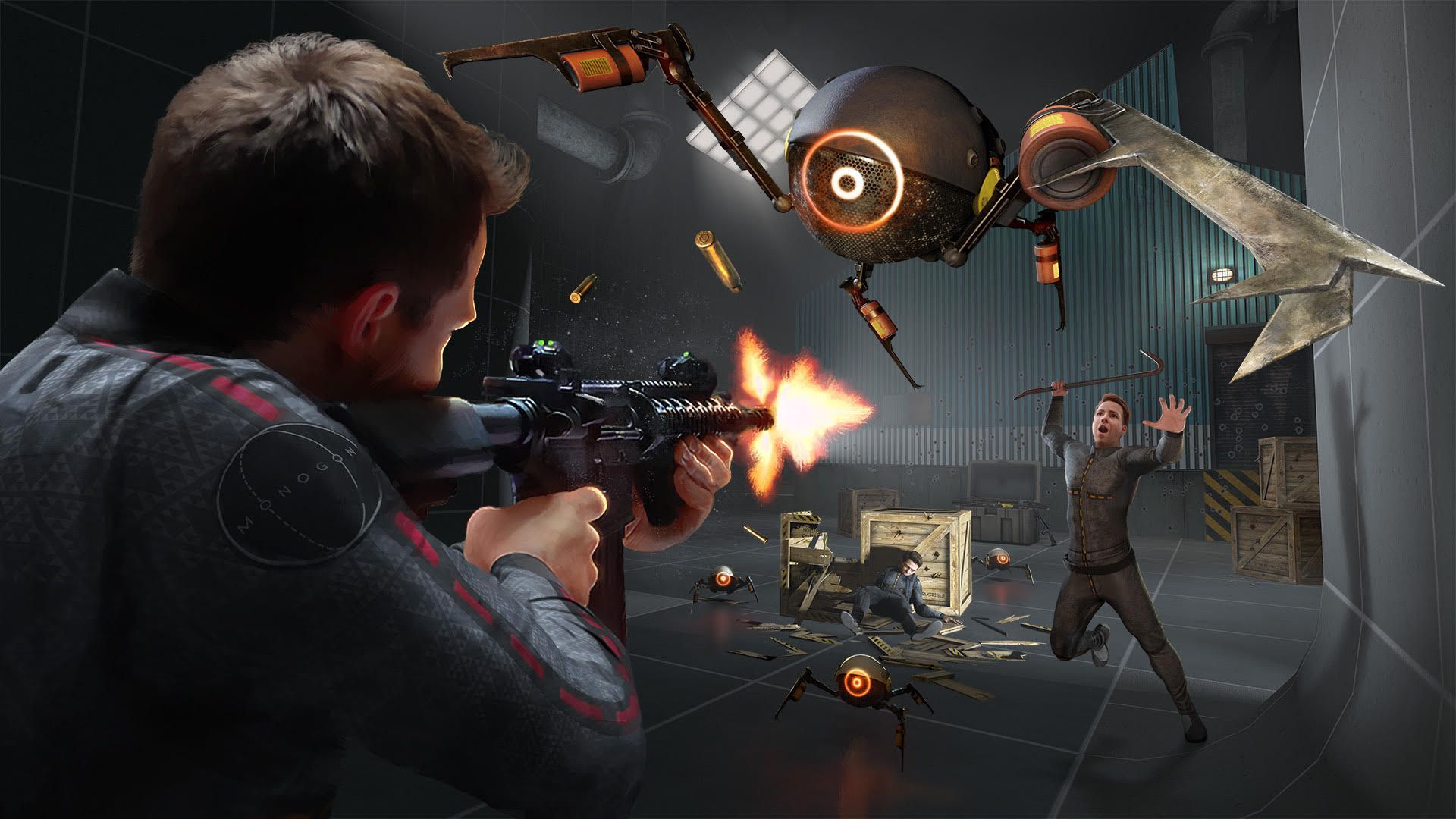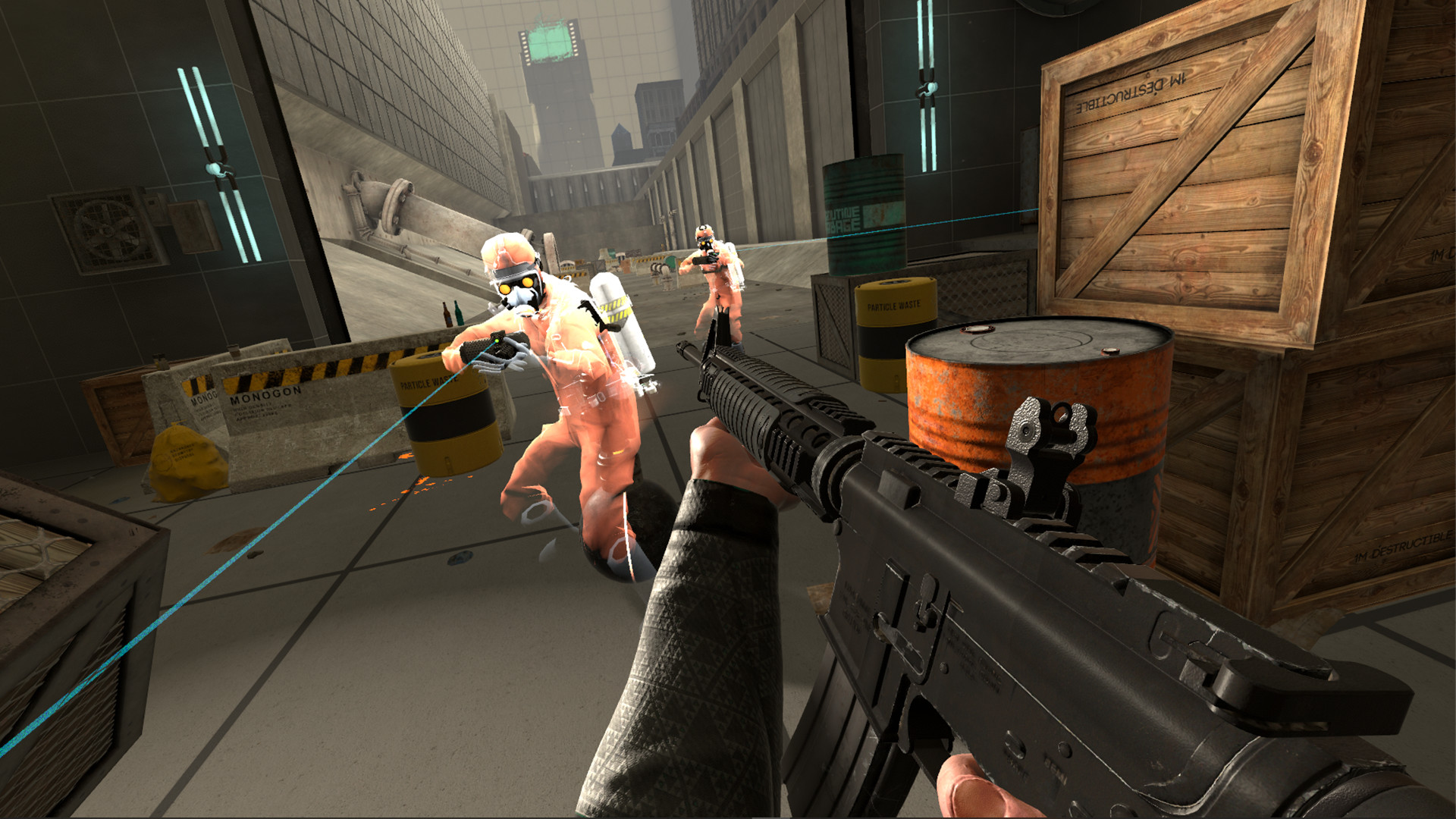Boneworks is the most fun I've had with physics in a game since Half-Life 2
Knocking stuff over is exciting again.

I remember the dawn of physics in games, and how exciting simply knocking something over was. It's hard to believe now, but for decades game worlds were largely static things. Film sets, basically. But then the likes of Deus Ex and Half-Life 2 came along, featuring realistic (well, ish) physics simulations that were an intrinsic part of the game. Whether it was JC Denton clumsily stacking slippy crates to climb over a fence, or Gordon Freeman hurling saw blades at zombies with the Gravity Gun, physics were the Next Big Thing.
And then they weren't. They became the standard, and now you just accept it when things fall over realistically in a game. That's what they're supposed to do. But this week, having played several hours of a weird VR game called Boneworks, I'm excited by physics again. Not because developer Stress Level Zero does anything particularly groundbreaking with them, but because you're reaching into the game and manipulating a richly reactive, physics-based world with your own arms. Or at least a digital representation of them.
Watch Andy messing with Boneworks' physics in the video above.
My name-checking of Half-Life 2 isn't just for effect, because the developers of Boneworks are clearly Valve fans. The game is a curious mix of Portal and Half-Life 2, with (genuinely tricky) physics puzzles, and a very City 17 aesthetic in places. There are automated turrets and weird graffiti on the walls, you'll occasionally have to drop a cube on a pressure plate, and enemies turn into floppy ragdolls when you kill them. Even the humour is kinda Portal-like. But the important thing is that it feels inspired by Valve, not just a copy.
It makes its own mark too, with brilliantly tactile, brutal melee combat, and some of the best virtual shooting around. Popping a spent magazine, grabbing another from your belt, and palm-slapping it into your gun feels hugely satisfying. The game is also surprisingly difficult. VR games are often dumbed down, or at least streamlined, so you can just enjoy the experience of being in their worlds. But Boneworks features proper puzzles and challenging combat, which is a nice change from the hand-holding a lot of VR games rely on.

I also like how the reactive, simulated nature of the world and the objects in it let you get creative. There are often multiple ways to get past an obstacle or solve a puzzle. In one section I had to get past a gun turret that, when it detected me, would kill me instantly. So I grabbed the lid of a garbage can, held it like a shield in front of me, crouched, and slipped past unharmed. The game never told me to do this; I just had a flash of inspiration, and it worked, and that felt amazing. There's an almost immersive sim-like quality to Boneworks at times, which gives it a level of depth I haven't experienced in many VR games.
The downside of this is that it's pretty sick-inducing. At least for me—you might be made of stronger stuff. There's a lot of jumping, climbing, falling, and running backwards, and after a day of playing it on and off, I felt pretty terrible and had to have a lie down. But it speaks to how compelling the game is that, despite this, I kept snapping the headset back on for more. Boneworks is a strange, genre-defying game, and it's difficult to get across just how much fun it is. But thanks to a brilliantly in-depth, interactive tutorial—which I ended up spending two hours in, purely because it was so much fun—it does a great job of easing you in, while retaining a sense of mystery throughout.
The biggest gaming news, reviews and hardware deals
Keep up to date with the most important stories and the best deals, as picked by the PC Gamer team.
If it’s set in space, Andy will probably write about it. He loves sci-fi, adventure games, taking screenshots, Twin Peaks, weird sims, Alien: Isolation, and anything with a good story.


